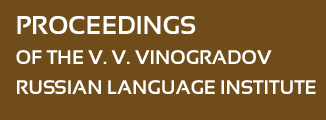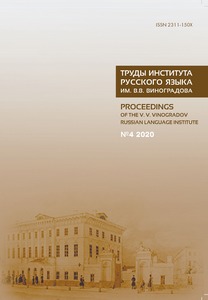LANGUGE AND SOCIAL VARIATION OF DISCOURSIVE CONSTRUCTION “VOT + X + VOT” IN THE RUSSIAN ORAL SPEECH
Abstract:
The article discusses the variability of the discursive construction “vot + X + vot” and its use in oral Russian speech. A discursive construction in this case is understood as a phrase that performs discursive functions and in which some of the elements are constant and some are variable. The material for the study was the texts of semi-structured inter views (total volume is about 97 thousand word usages) received from 48 informants; the sample of the informants was balanced according to the parameters “city of residence”, “gender”, “age”, “level of education”, and “specialty”. In this text material, 174 cases of using the discursive construction “vot + X + vot” were found. The analysis showed that the concerned discursive construction is usually multifunctional in speech, and the actualization of functions depends on the type of variable part (X); most often the con struction performs deictic and emphatic functions. The variable part in the construction can be very diverse: it can be used with different components — from individual words of any part of speech to predicative constructions (45 diff erent placeholders in total); the most common construction placeholders are demonstrative words etot, takoj, tak, eto, which usually perform a deictic function. The variability of the construction is also related to the emphatic function: the desire to emphasize some units in a speech chain that are important for a particular speaker makes this construction so versatile. The analysis of the sociolinguistic variation of the construction demonstrated that women use it in speech signifi cantly more often than men, which is also related to the emphatic function of the construction. Thus, the linguistic and social variability of the structure “vot + X + vot” in speech is determined by its emphatic function.


